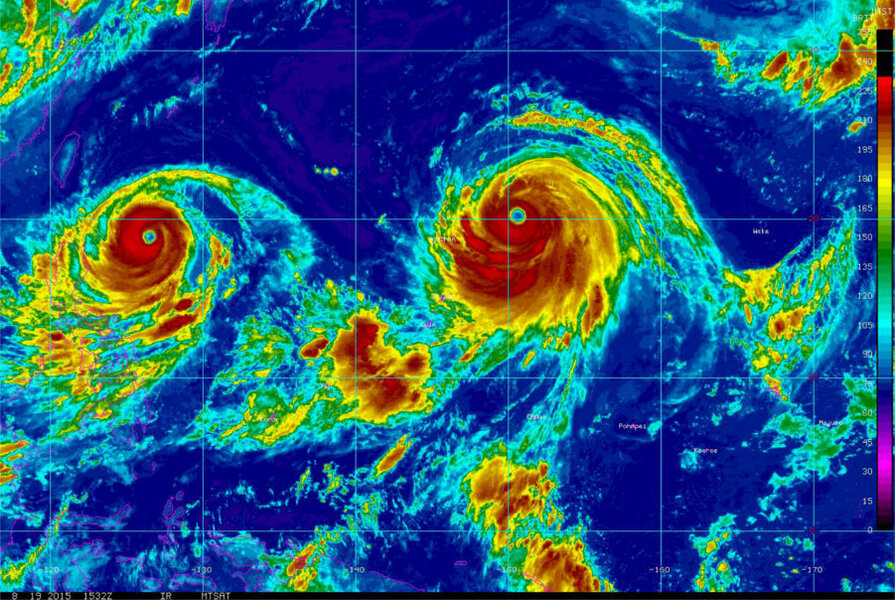Twin typhoons spin towards Taiwan and Japan
Loading...
Just a week after typhoon Soudelor raked Japan's Ryukyu Islands and Taiwan, the two countries are on alert again as two typhoons develop in the northwest Pacific.
The twin storms – Goni and Atsani – were upgraded to typhoon status on Sunday and are heading for Japan, Taiwan, or the northern Philippines.
Typhoon Goni is leading the way and projections by the Joint Typhoon Warning Center (JTWC) show the storm approaching Taiwan by the weekend.
It's not yet clear what threat Goni poses to Taiwan – current projections show it getting close, but not quite hitting the island nation. However, Bob Henson for Weather Underground writes, “Any slowdown in Goni’s progress near the mountainous terrain of Taiwan or nearby islands could lead to torrential, destructive rainfall.”
Meanwhile, Atsani is intensifying and heading north toward Japan, according to analysis by NASA’s Goddard Space Flight Center in Greenbelt, Maryland.
“Atsani might strike mainland Japan within the same timeframe, which could be life-threatening, or it could pass through the open waters to the east, dousing the island nation with heavy rain and strong waves,” reports PBS Newshour.
Japanese astronaut Kimiya Yui aboard the International Space Station posted photos of the twins on his Twitter page,
Both storms are still gaining strength, and the JTWC predicts that they will both reach super typhoon status – with winds in excess of 150 mph – by Thursday, explains Weather Underground's Henson.
Should Atsani and Goni become super typhoons simultaneously, they would be the first simultaneous super-storms in almost 20 years.
"The last time there were two super typhoons in the Pacific at the same time was in October 1997, when Super Typhoons Ivan and Joan overlapped," wrote Angela Fritz for the Washington Post. "Not coincidentally, 1997 was also the strongest El Niño on record, with sea surface temperatures running far above average across the tropical Pacific Ocean. At the very least, this year’s El Niño could at least rival 1997’s intensity."
Earlier this year, the National Oceanic and Atmospheric Administration announced a strong El Niño developing in the Pacific Ocean and predicted that it will continue through the winter of 2015-16.
El Niño 2015 is also expected to bring heavy rains to drought-stricken California.







